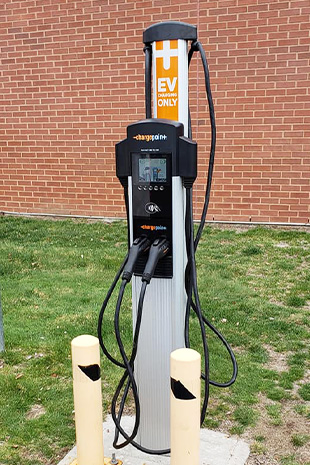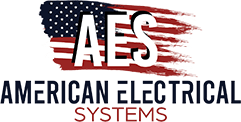Electrification Services in The Northshore, Massachusetts
PRODUCTS, SERVICES, AND SOLUTIONS TO HELP YOU BECOME ENERGY INDEPENDENT
What is electrification? Electrification is the process of converting your life, and the essential systems and appliances that support it, to green, renewable, and sustainable energy. This can mean supporting your purchase of an electric vehicle, helping you get the most out of your solar panels, or just helping you take steps to make your home or business more energy efficient. Whatever your electrification goals are, be they big or small, AES is here to help you find the right combination of products, services, and solutions to help you meet them.
Whether you want to supplement your current equipment or go completely green, AES has everything you need to pursue a more sustainable future. Call our Northshore office at 833-937-4237 today for a free in-home estimate!


REVIEWS
Committed to Providing Unmatched Value

– Caroline L.
Frequently Asked Questions About Electrification
We know you have questions about our electrification services, and we have answers. AES is just as committed to education as we are service and quality, and we’re always willing to help you get all the facts you need to make informed decisions about your residential or commercial property.
What Are the Advantages of Home Charging?
Home charging is less expensive, more convenient, and safer than charging at public charging stations. You won’t have to pay any extra fees to use it or compete for access, and you can always trust that the cables and electric current provided won’t damage your vehicle.
How Do Public Charging Networks Work?
Public charging networks are interconnected public charge stations controlled by a single central operator, and they’re typically found in large public spaces like malls, shopping centers, or commercial parks. A consumer or customer driving an electric vehicle can pull into any of the network’s charging stations and, depending on the managing organization’s rules, either pay a regular or one-time fee to charge their car.
Can You Use Public Charging Networks Without Being a Member?
Some public charging networks do require regular membership fees for use, but most offer single-use rates that allow non-members to access them.
What’s the Difference Between Level 1, Level 2, and Level 3 Charging?
The three levels of EV charging use different methods and charge your vehicle at different speeds. Level 1 chargers use standard household outlets and a 120-volt current, charging your vehicle at a rate of roughly 3-5 miles per hour. Level 2 chargers use 208 to 240-volt outlets that need to be specially installed and can charge your vehicle at a rate of 12-80 miles per hour depending on the exact voltage. Level 3 chargers, unlike level 1 and 2 chargers, use direct current (DC) electricity channeled by 400 to 900-volt outlets, which allow them to charge vehicles at an astounding rate of 3-20 miles per minute.
What Are Microgrids and How Do They Work?
A microgrid is a small, contained, and limited electrical grid that can supply power autonomously in the event that power from the main grid is cut off, essentially operating as a large-scale backup generator. The exact definition of a microgrid released by the U.S. Department of Energy is “a group of interconnected loads and distributed energy resources within clearly defined electrical boundaries that acts as a single controllable entity with respect to the grid. A microgrid can connect and disconnect from the grid to enable it to operate in both grid-connected or island-mode.” Microgrids have traditionally been powered by gas, diesel, or fossil fuel generators, but renewable energy resources like solar and wind have become increasingly popular choices for microgrids throughout the country.
What Are the Benefits of Installing a Microgrid?
Installing and relying on a microgrid can dramatically lower your operating costs and improve your overall energy efficiency. Additionally, because you have direct control over their infrastructure, microgrids are more reliable and dependable than grids managed by big electric companies.
Where Are Microgrids Used?
In remote areas, microgrids have been used to power entire communities, supporting multiple homes and businesses at the same time. Additionally, microgrids can be used to power remote commercial or industrial facilities that are far away from traditional resources. Essentially, microgrids are used mainly by communities or organizations that are largely cut off from urban electrical grids.
Have more questions? Ready to see what our electrification services can do for you? Call 833-937-4237 or send us a message online today – our Northshore team is ready to provide you with all the information and assistance you need to electrify your life!
Contact Us Today


